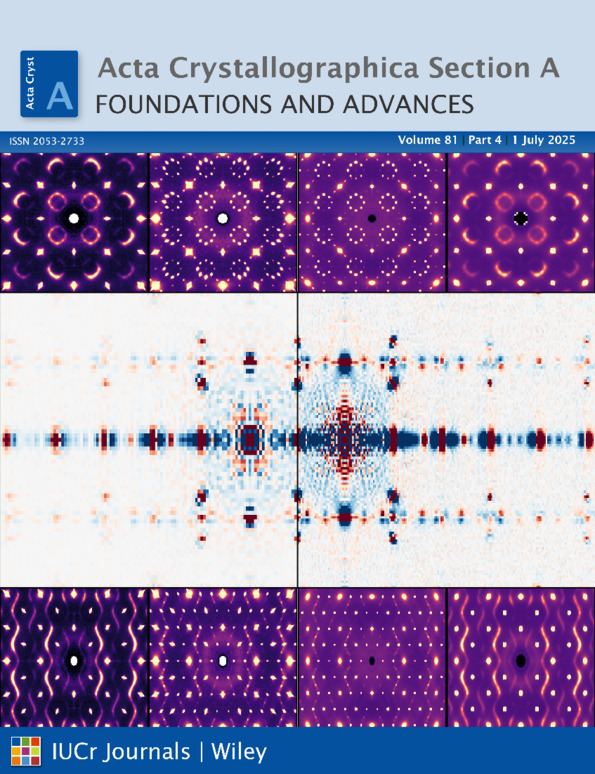Updating direct methods IV. Reduction of the structural complexity when quartet invariant phases are estimated by using the Patterson map as prior information
Abstract
Quartet invariants play a minor role in modern direct methods. In practice, only the quartets whose cosine is estimated to be negative are used, as they have no correlation with the triplet invariants. However, their role remains marginal: in fact, the quartet relations are of order 1/N while the triplet relations are of order 1/√N. The reliability of the quartets is therefore relatively low, in particular for the quartets estimated to be negative. Two papers have recently appeared (Papers I and II of this series) that describe procedures able to exploit the information contained in the Patterson map to estimate the triplet phases. The improvements in estimates are notable, apparently capable of resolving macromolecular structures even at non-atomic resolution. It therefore seems useful to develop a theory of quartet invariants that is able to exploit the Patterson information. This is the main purpose of this article. The method of joint probability distribution functions is used to obtain a von Mises-type distribution which associates a probability with each quartet phase. It is expected that the Patterson map, used as a priori information, can significantly increase the reliabilities of quartet invariants, particularly those whose cosine is estimated to be negative. The quartets may thus be able to play a more prominent role in future.




